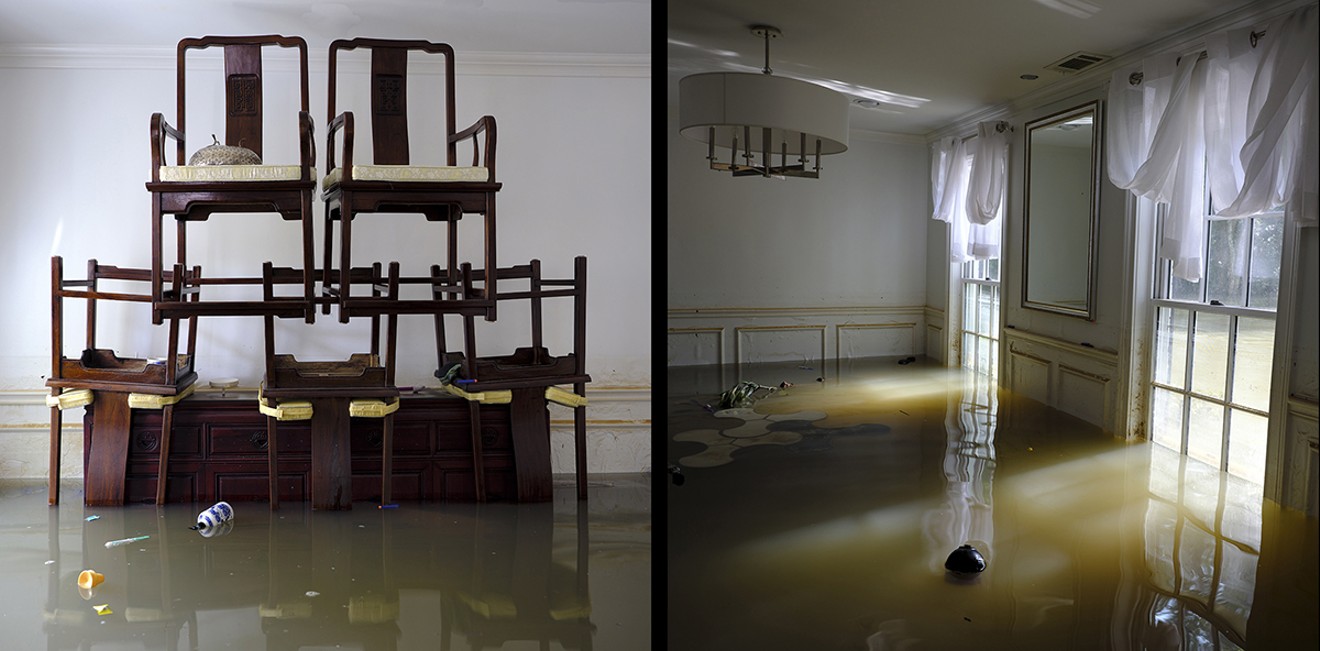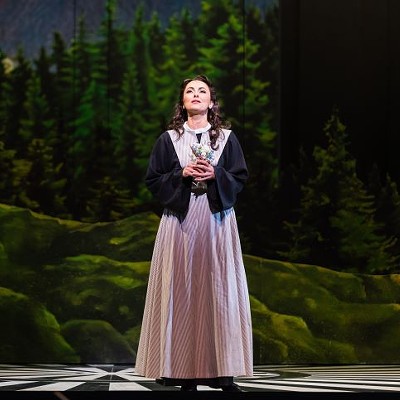But during the worst of Harvey, it was the images that began to emerge that really told the story. Coastal cities like Rockport, Port Aransas and Port Arthur took a brutal beating, as did more inland places like Houston, Wharton and Lake Conroe. It was through these photographs that the rest of the world began to realize that we had a new contender for costliest natural disaster in our nation's history.
Documenting the rains, flooding and dam releases — through both macro and micro lenses — were heroic amateur and professional photographers and journalists. Some ventured out by boat, hitched rides on trucks, dug chest-high waders out of storage and risked exposure to nasty waterborne toxins. Now, one year later, we'll get to see a collection of these images in a new FotoFest International exhibit, "Seeing Harvey: Personal Stories, Public Responses."
The submissions have come from all areas of the public sector, including photojournalists, artists and residents along the Gulf Coast. The collected images focus on the impact the storm had on our landscape and infrastructure, as well as on the human stories that emerged: first responders, felled businesses, personal heartache and the sense of community that developed as we all realized we were in this together.
"Working with partners, including the recently-established Houston Flood Museum, the Houston Chronicle newspaper, the Center for Public History at the University of Houston, and the Severe Storm Prediction, Education, & Evacuation from Disasters Center at Rice University, FotoFest is staging a number of public programs to encourage discussion on how the region collectively dealt with the events, and how the people, the city, state, and federal governments are preparing for future storms. Dates for the public programs will be announced online and via social media as they are confirmed."

FotoFest International is presenting a five channel video installation, titled "Deluge," as well as recovered artifacts and images by international photographer Gideon Mendel from his Drowning World series.
Photo by Gideon Mendel, courtesy of FotoFest International
Mendel has a strong portfolio under his belt, documenting important issues from around the world: HIV, poverty in South Africa, hunger and drought in Africa, homelessness in the United Kingdom, and a former migrant camp in the Calais Jungle. Images from Mendel's Drowning World series include survivors submerged up to their necks in water, as well as photographs that humanize these disasters, thus helping to prevent the victims from becoming just another statistic.
Steven Evans, executive director for FotoFest International, says that related programs — which will include a public oral history program and a conference — are designed to address memory, history, policy and action.
"More than a venue for international photography and new media, FotoFest is a platform for art and ideas, engaging our communities and encouraging dialogue. With 'Seeing Harvey,' we are inviting the community to share its myriad viewpoints of Hurricane Harvey and its aftermath — the highs, the lows, and the individual and collective responses," said Evans in his email to us.
The concurrent exhibits — one global and the other local — will pair well together, placing our very personal disaster in context with the rest of the world. "[The contributors for 'Seeing Harvey'] will be placed in the global context of Mendel’s work about flooding around the world," added Evans.
"Seeing Harvey: Personal Stories, Public Responses" and "Deluge - Gideon Mendel" are scheduled for September 6 to November 3, open 11 a.m. to 6 p.m. Wednesdays through Saturdays, Silver Street Studios, 2000 Edwards, 713-223-5522, fotofest.org. An opening reception is scheduled from 5-8 p.m. on September 8.







